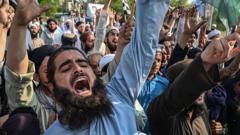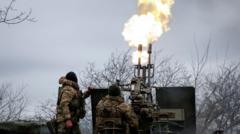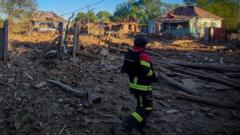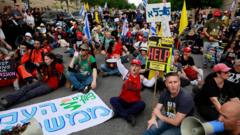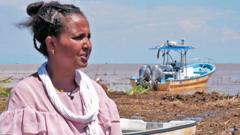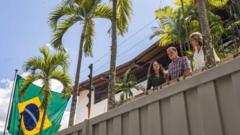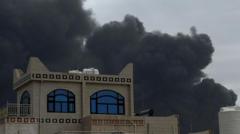Following a significant earthquake in Myanmar, military authorities are blocking aid access despite international pleas for assistance. Humanitarian agencies are raising concerns over the junta's manipulation of aid, jeopardizing those in desperate need.**
Aid or Armament? The Battle for Relief in Post-Earthquake Myanmar**
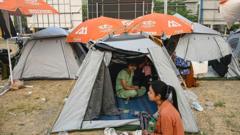
Aid or Armament? The Battle for Relief in Post-Earthquake Myanmar**
In the wake of a devastating earthquake, Myanmar's military government faces accusations of obstructing aid as humanitarian efforts become entwined with military strategy.**
In the wake of a catastrophic earthquake that struck Myanmar on March 28, which resulted in over 2,700 casualties, the efforts to deliver humanitarian aid have been overshadowed by military restrictions. After a powerful 7.7 magnitude earthquake rocked the region, humanitarian workers encountered significant hurdles as military authorities blocked their access to the most affected areas, even as junta chief Min Aung Hlaing urged for international assistance.
The crucial "golden hour" for rescue operations quickly diminished as rescue workers reported stringent measures enforced by the military, including curfews restricting movement, long checkpoints, and rigorous inspections of relief supplies. John Quinley from Fortify Rights emphasized that the military's claims of prioritizing safety lack legitimacy, noting that they could have facilitated relief efforts more effectively.
As authorities struggled to navigate around military blockades, the situation worsened with an attack on an aid convoy—a group of nine vehicles from the Chinese Red Cross Society transporting essential supplies. The military confirmed firing warning shots at the convoy, which was denied passage due to a lack of notification. Unfortunately, this incident reflects a disturbing pattern, as the junta has been accused of selectively using humanitarian assistance as a strategic tool to control aid distribution.
With their hold on only 21% of Myanmar's territory visible through a comprehensive analysis last year, the junta's strategy has often involved obstructing aid efforts in regions not directly under their rule. This pattern surfaced in past disasters such as Cyclone Mocha and Typhoon Yagi, where relief efforts were restricted ostensibly for security reasons. The junta’s tactics have reportedly been aimed at punishing populations for their resistance against military control by limiting access to vital assistance.
Concerns continue to mount surrounding the potential for the junta to repeat these tactics in the wake of the recent earthquake, particularly in the Sagaing region, where humanitarian groups note severe shortages of food, water, and shelter. Some local relief efforts are impeded by overly bureaucratic processes imposed by the military, requiring extensive authorization for volunteer actions and aid donations.
Aid organizations often find themselves circumventing the junta's obstacles by operating clandestinely, utilizing local connections to deliver aid while avoiding military scrutiny. Financial transactions typically occur outside the conventional banking system to preserve independence from the central authority. However, these covert operations often lead to delayed responses to urgent needs.
Despite the dire situation, some humanitarian workers hope that the magnitude of the disaster and the junta's public appeal for assistance will lead to easier access for relief. Yet, historical trends indicate skepticism regarding the junta's intent, especially as military jets have continued airstrikes in affected areas, resulting in civilian casualties.
Although Min Aung Hlaing's leadership signaled a potential temporary ceasefire to better facilitate aid, the military's readiness to respond to perceived threats raises alarms that the essential humanitarian support may still be weaponized. Human rights advocates stress the vital need to monitor the integrity of the aid distribution process, questioning whether assistance is genuinely reaching communities in need or if it is manipulated in line with military objectives.



